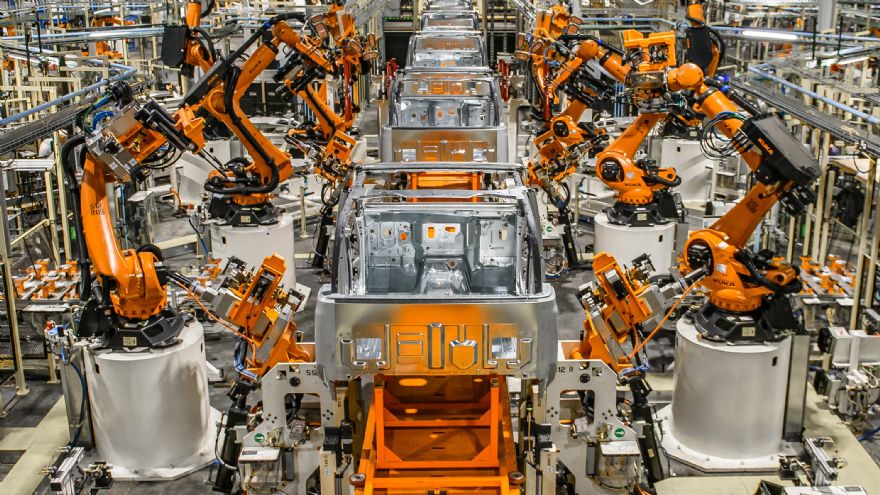
The new
World Robotics Report from the Frankfurt-based
International Federation of Robotics (IFR) shows an all-time high of 517,385 new industrial robots installed in factories around the world in 2021. This represents a growth rate of 31% year-on-year and exceeds the pre-pandemic record of robot installation in 2018 by 22%. Currently, the stock of operational robots worldwide stands at a new record of around 3.5 million units.
Marina Bill, the IFR’s president, said: “The use of robotics and automation is growing at breathtaking speed. Within the last six years, annual robot installations more than doubled; and according to our latest statistics, installations grew strongly in 2021 in all major customer industries, although supply chain disruptions as well as different local or regional headwinds hampered production.”
Asia remains the world’s largest market for industrial robots, with 74% of all newly deployed robots in 2021 installed there (2020: 70%). Installations for the region’s largest adopter, China, grew strongly by 51% with 268,195 units shipped. Indeed, every other robot installed globally in 2021 was deployed here. The operational stock broke the 1-million-unit mark (+27%), highlighting the rapid speed of robotisation in China.
Japan remained second to China as the largest market for industrial robots. New installations were up 22% in 2021 with 47,182 units. Japan’s operational stock was 393,326 units (+5%) in 2021. Japan is also the world’s predominant robot manufacturing country, with exports of the country’s industrial robots achieving a new peak level at 186,102 units in 2021.
The Republic of Korea was the fourth-largest robot market in terms of annual installations, following the USA, Japan and China. Robot installations increased by 2% to 31,083 units in 2021, following four years of declining installations. The operational stock of robots is estimated at 366,227 units (+7%).
Meanwhile, robot installations in Europe were up 24% to 84,302 units in 2021, with demand from the automotive industry steady and that from general industry up by 51%. Germany, which belongs to the world’s top five robot markets, had a share of 28% of total new installations in Europe. Italy followed with 17% and France with 7%. The number of new robot installations in Germany grew by 6% to 23,777 units in 2021 — the second-highest installation count ever recorded, following the peak resulting from massive investments from the automotive industry in 2018 (26,723 units).
In the UK, industrial robot installations were down by 7% to 2,054 units. The operational stock of robots was calculated at 24,445 units (+6%) in 2021 — less than 10% of Germany’s stock. The automotive industry reduced installations by 42% to 507 units in 2021.
In 2021, 50,712 industrial robots were installed in the Americas, 31% more than in 2020 and the second time that robot installations in the Americas exceeded the 50,000-unit mark, with 55,212 units in 2018 setting the benchmark. New installations in the USA were up by 14% to 34,987 units in 2021 — greater than the pre-pandemic level of 33,378 units in 2019 but was still considerably lower than the peak level of 40,373 units in 2018.
In conclusion, the IFR says that despite the challenges of rising energy prices, rising intermediate product prices, and the scarcity of electronic components affecting all branches of the global economy, order books are full and demand for industrial robots has never been higher. In total, global robot installations are expected to grow by 10% to almost 570,000 units in 2022. From 2022 to 2025, average annual growth rates in the medium to upper single-digit range are expected.